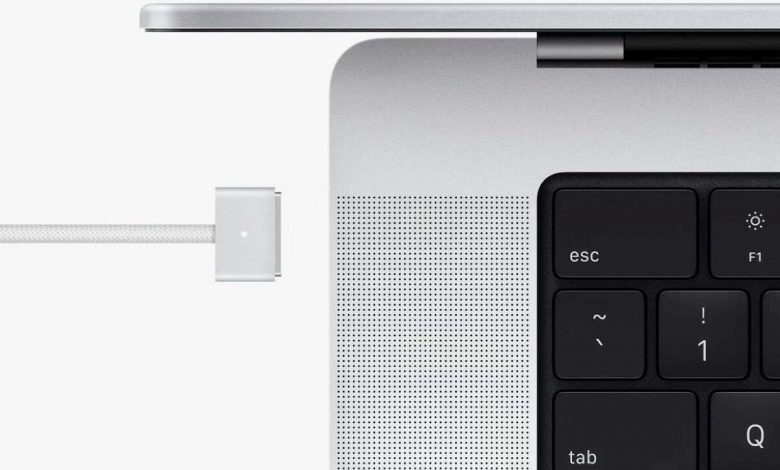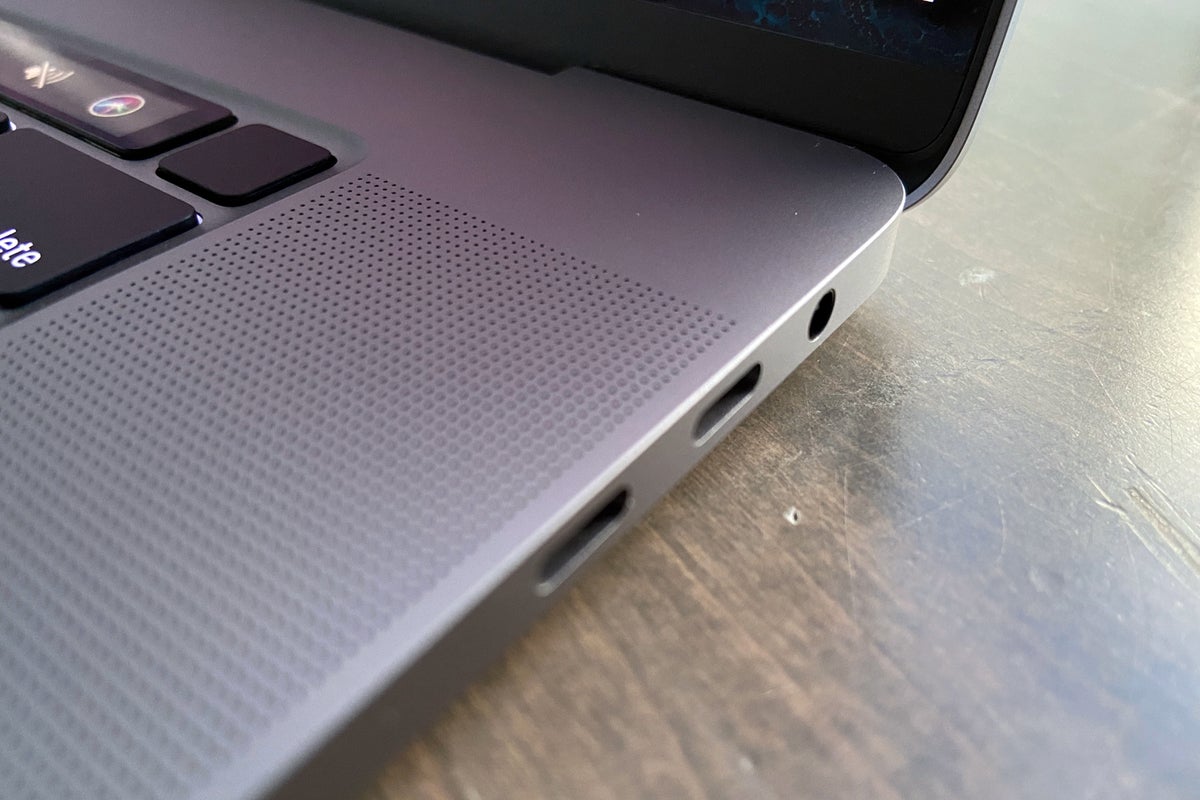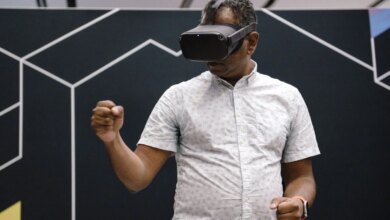Review: The new 16-in. MacBook Pro is Apple to the core

Apple’s new MacBook pro laptops were unveiled just three weeks ago, and have been in users’ hands for only two. Having spent a week using one of the 16-in. versions, I can say it represents a huge leap for Apple’s computer platform by tying together all of the elements of the company’s computing vision.
How the MacBook Pro performs: the TL;DR
- Performance data confirms Apple’s launch claims; it’s fast.
- Battery life and performance mean you can achieve much more with these Macs.
- You effectively end up with a reference monitor in your backpack.
- You’ll hardly ever hear the fan; these Macs run cool.
- Desktop performance on the go that’s as effective in the office as in the field.
- An overall triumph of design and execution, from the processor to the OS.
- Apple’s move to M-series processors raises the status of its entire Mac fleet.
Astonishing performance
I’ve been working with the mid-range 16-in. model equipped with an M1 Pro chip that has a 10-core CPU, 16 GPU cores, and 16GB of unified memory. It costs $2,699 (and is available to the same specifications in a 14-in. model for $2,499).
Cast your mind back to the late 2019 MacBook Pro with an Intel Core i9-9980HK chip; it yielded Geekbench scores of 1,087 (single-core) and 6,823 (multi-core). Then recall the M1-based 13-in. MacBook Pro from last year; it achieved 1,706 (single-core) and 7,385 (multi-core) scores. (The M1-based MacBook Air hit similar numbers.)
I couldn’t quite believe the data I generated with Geekbench testing on this MacBook Pro: On average across five tests, the new Mac hit 1,755 (single-core) and 12,547 (multi-core). That’s as good as a late 2017 iMac Pro or an entry-level late 2019 Mac Pro — in a system you can carry under one arm.
This performance boost reflects how Apple configured the cores on these chips. As part of Apple’s processor evolution, it turned an additional two cores on these systems into high performance cores. That move is reflected in these results.
You’ll get work done faster
What that performance means is significant. Put simply, if your work involves using computers at peak performance to get development, design, video, or scientific research calculations done, these new Macs will help you get work done faster. On an individual basis, that’s significant, but if your company runs fleets of machines, you may well see significant cost savings and productivity increases over time if you deploy these.
At least one developer said his company will see these Macs pay for themselves in terms of productivity benefits within three months of deployment. Many developers are deploying these Macs because they are significantly more capable than existing laptops. I’ve also seen reports that claim significant application speed increases on these Macs. (Developers can also now use Apple’s TestFlight to distribute application betas to Macs.)
Apple and others have published numerous statistics to explain the performance advantages.
- If you work in post-production or video, you’ll benefit from 1.7x the rendering speed when working in 8K video.
- Software developers migrating to these Macs are seeing Xcode compile and project building speeds double.
- 3D artists claim 2.5x faster rendering using Redshift.
There are other statistics available, but what these three have in common is that each represents professional tasks in which the speed of the Mac makes a real difference in how quickly a project moves forward. These machines reduce the inherent productivity constraints put in place by the time it takes your computer to accomplish tasks.
Shhhh. Quietly goes the work
I still haven’t heard the MacBook Pro’s fan. To push it, I’ve created 500 loops (basically the same loop copied over and over) of audio in Logic, tried out some video editing and transitions in Final Cut X, and pretended to compile sample code in Xcode. I’ve used email, opened multiple Safari windows, and left all the creative apps running in the background. I even considered running Chrome, but since that browser probably hasn’t yet been optimized to play nice on these Macs, I held off. I tried all these things together along with downloading a movie, watching “Foundation” and making a Facetime call to my partner. (She was in the room next door and told me to stop being weird.)
No fan noise.
I am certain it is possible to make these fans start up. I’ve certainly read about it. But I couldn’t make it happen myself. I even opened System Preferences > Battery and enabled High Power Mode.
 Apple
AppleThe Battery System Preference in macOS Monterey allows you to choose how much power the CPU devotes to tasks.
I’m guessing if the late CEO Steve Jobs is watching from the afterlife, he’ll feel pretty good, given he always aspired to fanless Macs; in this configuration, Apple is providing close to that even while doing computationally demanding tasks.
This is also reflected in energy consumption. I was pleasantly surprised by how well the 99.6-watt-hour-lithium-ion battery held up. What I’ve learned suggests that if you are a video professional and you take one of these Macs outdoors to work on a project, your computer will probably hold up for a day. Apple claims 21 hours of battery life. Again, that will change depending on what you are doing. Photographer Austin Mann describes the battery life as putting these Macs on “a radically different planet.” He believes it’s so good that pro users like himself will begin to use their Macs to do tasks in the field they would have avoided unless connected to power. Not only will the tasks you already do on battery power get done faster, but you’ll begin to do more tasks because the battery lasts longer.
While previous MacBook Pros delivered better performance when connected to power, there is no performance difference in these models when running on the battery alone. Apple published a series of charts to show you can expect maximum performance for less battery life, and says you’ll match the GPU/CPU performance of any 8-core PC chip while using 70% less power on an M1 Pro Mac.
Think about that.
Anyone running a fleet of PCs could see significant reductions in their energy expenditure after a move to Apple Silicon. Larger companies may also unleash measurable reduction in carbon emissions. I have spent time attempting to clarify just how much energy the Mac consumes to estimate the impact of that but haven’t found the data yet. The reason this matters is that the M1 Mac mini is significantly cheaper to run than preceding Macs. I see no reason to think this will not be the case here, though energy consumption does reflect use. Apple will likely publish energy consumption data soon.
A reference display in my backpack
Have you ever watched a movie at a 90-degree angle to the screen on your Mac? Now you can. The 254ppi XDR display on these Macs is phenomenal. Essentially, it’s a reference monitor you can carry with you. This is a great experience for any user, but if you use your Mac for color correction, film, design, photography, or other creative tasks, it’s going to vastly improve your working life with its color accuracy. Those 7.7 million pixels add spark to anything you see on screen.
You might not notice the 120Hz refresh rate, not because ProMotion doesn’t add anything to the experience but because you won’t be aware it is there. What I saw is that items on the display seem smooth when you scroll through them, images are finely detailed, and I enjoyed deeper blacks, brighter whites and colors that bounced off the screen. The Liquid Retina XDR display is rated at 1,600 nits, which is bright, and offers a million-to-one contrast ratio. This is a nice to have for most people, but is a thing of brilliance and wonder to creative professionals working with fully optimized content — particularly video, architecture, or medical imaging professionals. (Your spreadsheets will also look better.)
The display also has built-in reference modes that make grading HDR content seamless.
Notch a problem?
I’m completely unconcerned about the notch at the top of the screen on these machines. While I appreciate that a very small number of the professional users who need one of these Macs may use multiple Menubar icons, I don’t believe many will run into a real problem. I also appreciate that some applications may not yet be optimized to handle the notch, but the ones pros use probably soon will be, and Apple has a setting to help manage that. In my opinion, the fact that the notch has become the primary criticism of these new Macs shows us what a supremely limited palette of criticism exists.

Of course, the notch is only one aspect of these Macs. We also get the welcome return of a full-sized, proper keyboard that seems much more substantial than the butterfly keyboard it replaces. While I liked the Touch Bar, I had missed keys that work reliably much more. This swap — and the mood-matching backlit keys — make the MacBook Pro a more reliable system. That we at last have a 1080p FaceTime camera and better Wi-Fi connectivity just sweetens the deal.
(Apple has also created some machine vision intelligence algorithms that mean you get a better image in low light conditions with less graininess and more detail in the shot.)
Some may recall the praise heaped upon the built-in mic and speaker system in the 2019 MacBook Pro. All of this remains in the new edition and has been improved with more bass output across a wider range of frequencies, with clearer sounding audio in the mid- and high range. That means this Mac delivers real “oomph” for audio playback, supports spatial audio with Dolby Atmos, and has a three-mic array that’s sufficiently sensitive to pick up even quiet voices. If you make podcasts, this portable production studio will see you through.
One note: It weighs a substantial 2.1kg, slightly heavier and thicker than the model it replaced.
Connecting it up
MagSafe is another welcome improvement, if you consider not tearing your Mac apart when someone inevitably trips over the power cable a good thing. For me, MagSafe remains one of Apple’s most useful notebook innovations. I can still recall the horror I felt when I accidentally ripped the power input from my clamshell orange iBook, which then tumbled tragically to the stone kitchen floor.
You can still charge up the laptop using one of the standard USB-C ports. Given that you can charge the battery up to 50% in 30 minutes using the included MagSafe charger, though, why would you want to use USB-C?
 IDG
IDGThe I/O on offer is improved. The SD card slot is back, along with three Thunderbolt 4 (USB-C) ports, an HDMI port, and a headphone jack — along with the ability to run two external displays at up to 6K. I imagine pro video editors will maintain a hub connected to a host of peripherals at their desk and simply plug their MacBook in when not in the field.
For me, at least, it’s as simple as one cable connected to my powered Elgato hub. While your experience may vary, it’s hard to ignore that what’s happening here is that these Macs effectively give you the equivalent of an entry-level Mac Pro you can tuck under your arm.
No wheels are required.
In praise of Apple’s whole widget strategy
Apple acquired PA Semi in 2008. When it did so, the acquisition likely reflected a strategic decision the company had already made, possibly even before the introduction of the first iPhone.
That decision was almost certainly inspired by the poor results of the PowerPC processor plan, which stymied Apple’s efforts for years. The move also hints that the use of Intel chips in Macs was — on some level, at least — seen as a temporary stop-gap before Apple could build its own processors.
Throughout the years Apple worked with other people’s chips, the company sought to optimize application and system performance via the operating system, some of the software, and by designing the hardware. While limited by what its chosen third-party hardware components could achieve, Apple worked closely with some vendors to find optimizations and produced a system that still impressed despite those hardware compromises.
Apple doesn’t have to make the same compromises any longer. It can now design the operating system, the hardware, the processor, and some of the software, bringing that work together to realize a fully optimized experience on all its products, including Macs.
We’re only really at the beginning of the Mac processor part of this new journey. But as we reach a moment when performance enhancements on any platform depend on on-chip optimizations and the kind of software and hardware design decisions Apple has already been making, Apple is well set for the future.
With TSMC, it seems likely that the first mass-market PCs in the industry to run on 3-nanometer chips will have an Apple logo. But as we move toward 1nm chips it’s going to become more cost-efficient to optimize how chips work rather than the process used to make them.
It is in that context I believe Apple’s brand-new MacBook Pro combines all the benefits of the company’s many years of strategic innovation. It’s a remarkable testament to the company’s determined approach, though doesn’t explain the years during which Apple seemed to show little interest in Macs.
Must or miss?
If you need this kind of power (or the expansive 16-in. display), the MacBook Pro is a definite must. This model combines all that made its predecessor great, addresses all the criticisms people had, and underpins everything with a chip that performs like no other. And yes, next year’s model will be better again, but this model is already better than what was once seen as best.
While I would like for the Apple logo on the lid to light up, I consider this MacBook Pro to be a triumph at every level, from the years of work on the internal processor to the OS and display. Such compromises as do exist (like that notch), really only serve to show how far Apple has knocked this particular ball out the ball park.
Please follow me on Twitter, or join me in the AppleHolic’s bar & grill and Apple Discussions groups on MeWe.
Copyright © 2021 IDG Communications, Inc.




